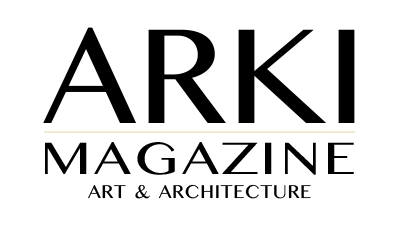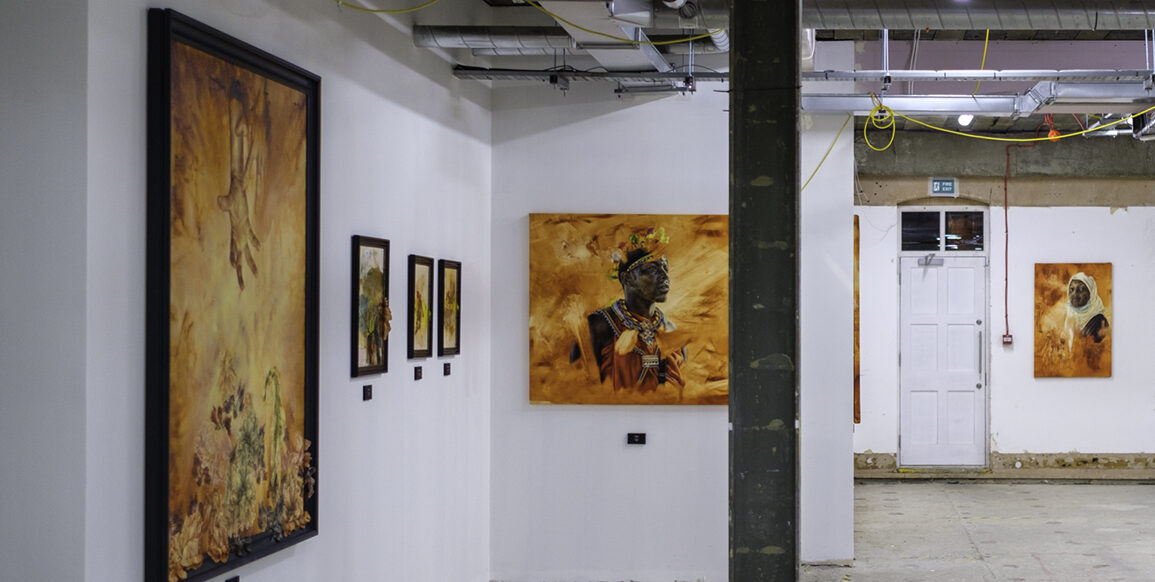In conversation…
“if they have a warming presence or a mysterious air. I can usually understand what the essence is just by observation of the character alone“.
1. You seem to frequently paint based on your surroundings and I suspect that is the driving force that fuels your inspiration.
What takes you to these far and wide places in the first place?
You’re right, I seek creative inspiration from unfamiliar places. New environments allow my painter’s brain to be fed with fresh and exciting visuals and narratives which I am then able to explore through my work. Not only do I feel artistically fulfilled during these times, I am also able to gain greater insight into our world and connect to the people inhabiting it. To me this shows just how powerful an instrument painting can be in helping me to increase my awareness and experience of life.
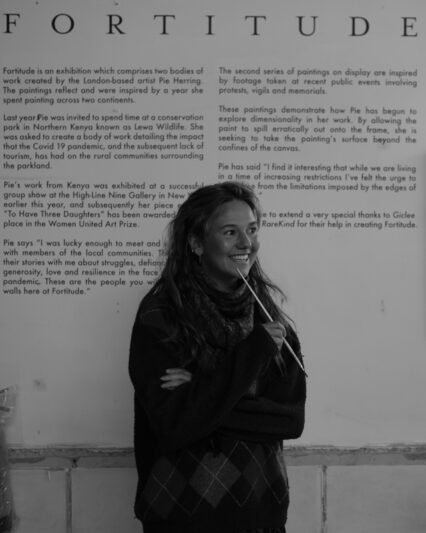

2. Does it take a lot of planning or do you find a flight and Airbnb and see what happens when you’re there?
It depends on the situation. At first, yes, I got on a flight to Kenya and I let the experience guide me. However, more recently I have been teaming up with organisations, many of them are non-profit companies working in a bid to help local communities. I ask for access to their stories and aim to raise money for them through the sales of the resulting artworks that I produce. In addition to this, I have also been invited to artist residency programmes abroad, both in Morocco and an upcoming one to Ghana.
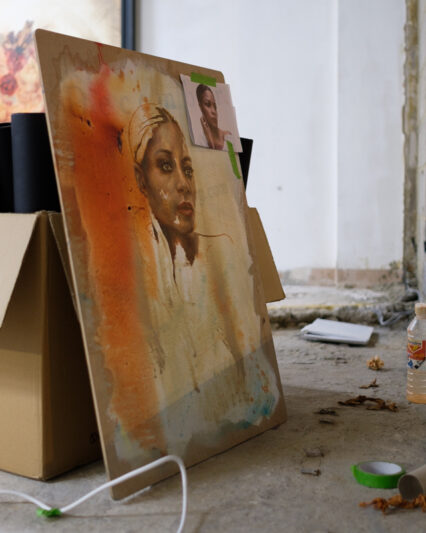
3. You have the ability to capture the soul of your ’subjects’ – Do you tend to get to know the people first?
Thank you. This is an interesting question and the answer has evolved as my work progresses. When I began I thought it was important to have a strong understanding of the sitter. However, recently I realised that I am drawn to that person for a reason, and whatever it was that caught my initial attraction to the character is what I want to capture in the painting itself. For instance, if they have a warming presence or a mysterious air. I can usually understand what the essence is just by observation of the character alone.
4. Do they sit for you to paint or is it based on a photograph?
I work predominantly from photographs. I take plenty of them, and I tend to use many of those images for one painting.
5. You obviously have a good understanding of photography and lighting.
The photographs I take are usually fleeting and nothing impressive. I think my understanding of composition and lighting actually comes out in the painting process itself.
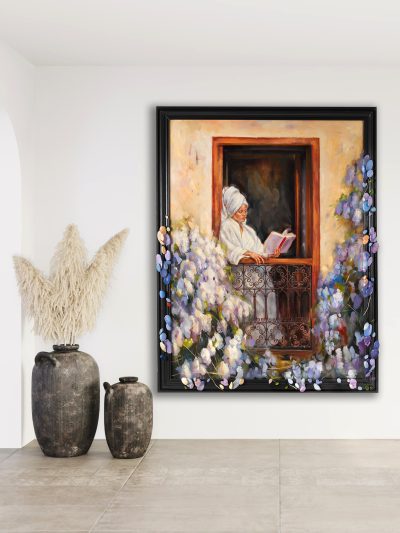
6. Many of your works have a finished, yet unfinished feel about them – How do you know when it’s finished?
The age-old question! I want to leave some confusion and mystery to the piece. I often get to a point where I fear adding more paint and this strikes me as a good point to put the brush down. I’ll keep the painting within my sight for a few weeks in case something pops out that I feel I should alter, if nothing arises then I feel it is complete.
7. Rust colour seems to play an integral part in all your works. Was/is this a conscious choice or something that just materialised?
That was a happy accident. I used to create a first layer of the rust colour as a backdrop so as to not paint directly onto a white canvas. However, when I first went away to Kenya I realised that with a bit of adjustment, the colour was similar to the rich red earth found on the ground. As I was moving about I accidentally disrupted a recently painted surface with a cloth. It created a beautiful texture and pattern within the surface. I started to explore these interruptions further. I used twigs, rags, and leaves to create marks on the surface that imitated impressions found in the Kenyan soil. I still use the colour to create my backdrops but as I moved to new places it has become less dominant.

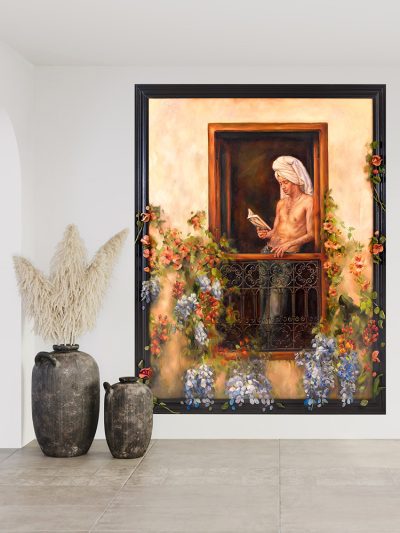
8. Your latest works incorporate the frame as part of the piece – An idea I’ve always loved and surprised more people don’t do. Can you elaborate a little more on this?
Yes, this idea started to develop when I was in Kenya. I painted an elderly fisherman and used some wood from his fish market stall to create the frame for the piece. I began to think of the painting as a sculpture. This has led to my most recent works which see elements of the painting growing beyond the frame and entering a three-dimensional space. It’s definitely an idea I will continue to explore.
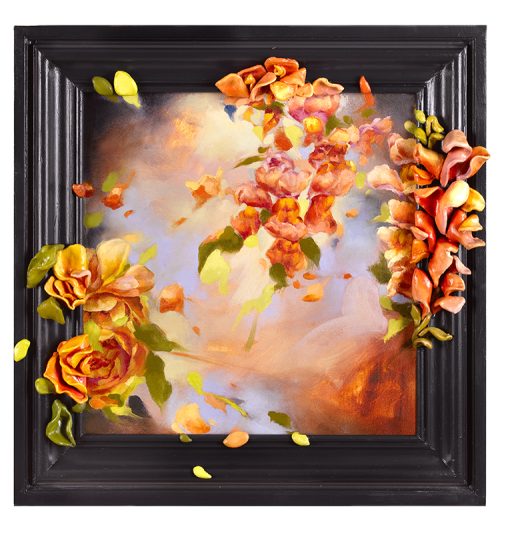

9. When art isn’t consuming you – what occupies your time?
It sounds like quite an obvious answer, but it’s important for me to spend time with my family and friends. It can be quite a solo adventure being a painter, especially when you’re away from home. a lot of the time When we can we go to the coast in the UK. My idea of heaven is sea air, cold water, and seagulls.
10. ’Settling down’ is always an interesting question we come across as creatives. Some people feel settled whilst travelling and creating, some people feel settled at a desk.
Do you think travel always be a criteria for your art or do you ever plan to be in one place, with a studio?
Good question. You never know what tomorrow will bring but I would love to cultivate a practice that keeps me seeing new places and meeting new people whilst also having periods of the year in a more settled homely studio environment – by the sea, with seagulls.
11. Finally, if you could own any 3 works for yourself, what would they be?
Jenny Saville – Self-Portrait (After Rembrandt)
Flora Yuknovich – Butter Wouldn’t Melt
Mark Rothko – Red on Maroon
